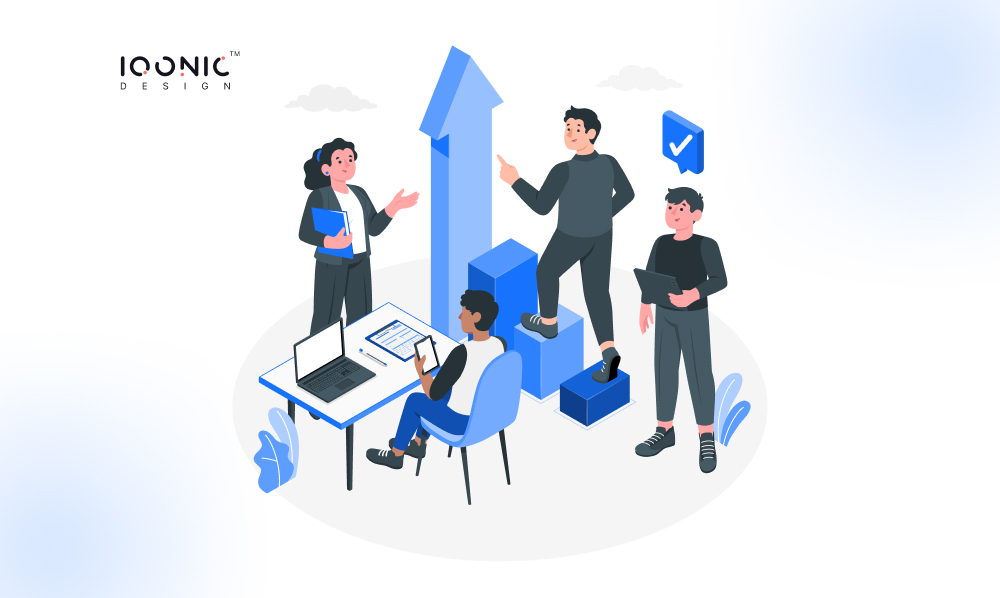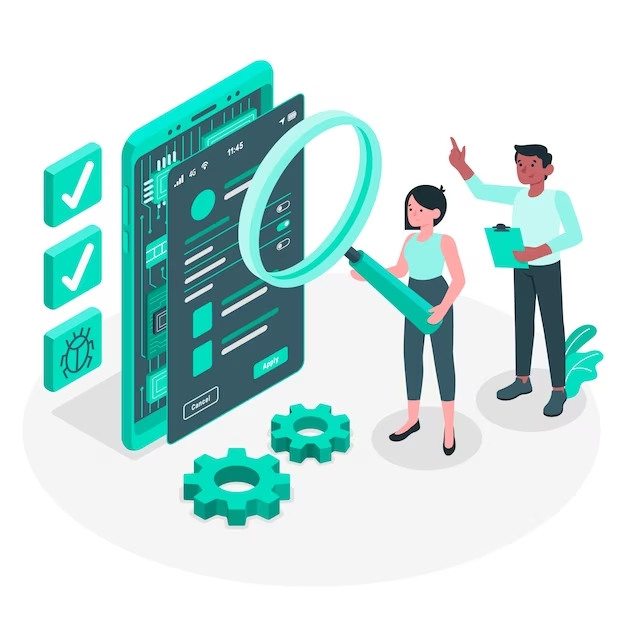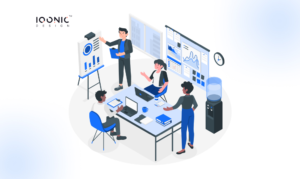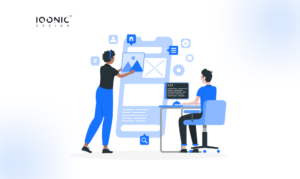
A Step-by-Step Guide to Enterprise Application Development in 2024
In 2024, enterprise application development has become a cornerstone of modern business success. With the ever-growing reliance on digital solutions, the need for efficient and tailored applications has never been greater. Enterprises are now navigating a tech landscape of rapid changes and fierce competition. To stay ahead, they must harness the power of enterprise application development.
Key technologies and trends in this field include the widespread adoption of cloud computing, which offers flexibility and scalability. Additionally, the rise of low-code and no-code platforms makes app development more accessible, even for those without extensive coding skills. Artificial intelligence and machine learning are integrated into applications to enhance functionality and user experiences.
Understanding Enterprise Application Development
Enterprise application development is the process of creating software solutions tailored to the specific needs of businesses. These applications are designed to streamline operations, enhance productivity, and provide a competitive edge. In 2024, their significance cannot be overstated.
The evolution of enterprise applications has been remarkable. From basic spreadsheets and standalone software, they have transformed into complex systems that connect various facets of an organization. These applications now incorporate advanced features like data analytics, real-time communication, and mobile accessibility, enabling businesses to make data-driven decisions and respond swiftly to market changes.
Crucially, enterprise application development is no longer a luxury but a necessity. It empowers companies to adapt to the fast-paced digital world, improve customer experiences, and maintain a competitive edge. In 2024, the journey of enterprise application development is poised to continue, shaping how businesses operate and thrive.
Preparation and Planning
Planning an enterprise application begins with thorough preparation. The initial steps involve defining your project’s scope, objectives, and target audience. It’s crucial to understand the specific needs and pain points your application aims to address. This is where conducting a needs assessment becomes pivotal.
A needs assessment involves identifying and prioritizing the requirements of your users and the organization. It helps you align your application development with the real challenges your business faces. By gathering insights from stakeholders and end-users, you can ensure that your project serves its intended purpose effectively.
Choosing the Right Technology Stack
Selecting the appropriate technology stack is a critical decision in the application development process. It involves choosing the programming languages, frameworks, and tools best suit your project’s requirements. When choosing this, scalability and security must be at the forefront of your considerations.
Scalability ensures that your application can grow and adapt to increasing user demands. It’s essential to select a technology stack that can handle both current and future workloads. Security is paramount in safeguarding your application and sensitive data. Opt for technologies with strong security features and stay updated on best practices to protect against potential threats.
By carefully planning and selecting the right technology stack with scalability and security in mind, you set a solid foundation for successful enterprise application development.
Design and Architecture
Designing the architecture of an enterprise application is a crucial step in ensuring its success. The process involves several key elements:
1. Requirements Analysis:
To begin, it’s essential to understand the specific needs of the business and its users. This step helps in defining the scope of the application.
2. System Design:
This phase involves creating a high-level design that outlines the system’s structure and components. It defines how data flows, the relationships between different modules, and the overall layout.
3. Scalability:
A well-designed architecture must be scalable to handle growing user loads. It should allow for the addition of resources and features without significant disruptions.
4. Flexibility:
Flexibility is crucial to adapt to changing requirements. The architecture should be able to accommodate modifications and updates without major overhauls.
5. User-Friendliness:
Development Process
The development phase of an enterprise application is a multifaceted process. It includes the following steps:
1. Planning:
The application development process begins with a comprehensive plan that outlines project goals, timelines, and resource allocation. Agile methodologies are often used for their flexibility in adapting to evolving requirements.
2. Design and Prototyping:
During this stage, the detailed design of the application is created, incorporating the architecture’s principles. Prototyping allows for early user feedback.
3. Development and Coding:
Developers create the practical code based on the design. Collaboration is vital, as team members work together to implement various components.
4. Testing and Quality Assurance:
Rigorous testing ensures the enterprise application functions as intended, with attention to scalability and security. Any issues are addressed promptly.
5. Agile Methodologies:
Agile methodologies, such as Scrum or Kanban, enable iterative development and regular feedback. This approach keeps the project on track and aligns it with changing business needs.
Quality Assurance and Testing

Testing plays a pivotal role in ensuring the reliability of an application. It serves as a quality control mechanism to identify and rectify issues before they reach end-users. Testing encompasses various methods and tools, including:
1. Manual Testing:
Testers perform scenarios and use cases to identify defects. It’s effective for exploratory testing and user experience evaluation.
2. Automated Testing:
Automated scripts execute predefined test cases, enhancing efficiency and repeatability.
3. Performance Testing:
This assesses application performance under different loads and identifies bottlenecks.
4. Security Testing:
It ensures the enterprise application resists vulnerabilities and threats.
5. Regression Testing:
This verifies that new updates don’t negatively impact existing functionality.
Effective testing with tools like Selenium, JUnit, and LoadRunner ensures a robust and reliable application.
Deployment and Integration
Deploying an application in an enterprise environment requires a systematic approach. It involves:
1. Environment Setup:
Preparing the infrastructure with necessary hardware and software components.
2. Deployment Plan:
A well-defined plan for installing, configuring, and testing the application.
3. Integration with Existing Systems:
The new enterprise application must seamlessly connect with existing systems, ensuring data consistency and process flow.
4. Data Migration:
If needed, migrate data from old systems to the new application.
5. Testing Post-Deployment:
Comprehensive testing to confirm that the application functions correctly in the live environment.
Deployment and integration demand meticulous planning and execution to minimize disruptions and ensure a smooth transition to the new application within the enterprise ecosystem.
Security Measures

Cybersecurity is paramount in enterprise applications, safeguarding sensitive data and maintaining user trust. Implementing best practices is crucial:
1. Data Encryption:
Utilize encryption protocols to protect data during transmission and storage. It prevents unauthorized access even if data is intercepted.
2. Access Control:
Restrict access to authorized users with strong authentication mechanisms, limiting potential breaches.
3. Regular Audits:
Conduct frequent security audits to identify and address vulnerabilities promptly.
4. Patch Management:
Keep software and systems up-to-date with the latest security patches to defend against known threats.
5. Employee Training:
Train staff on security protocols and practices to reduce human errors that can lead to breaches.
Maintenance and Updates
Post-launch, effective application management is vital for its longevity:
1. Monitoring:
Continuously monitor the application’s performance and security. Use automated tools for real-time alerts.
2. Bug Fixes:
Promptly address any reported bugs or issues to ensure a seamless user experience.
3. Scalability:
Plan for scalability as user demands grow, ensuring the application can handle increased loads.
4. Regular Updates:
Regularly release updates with new features and security enhancements to stay competitive and safe.
5. User Feedback:
Collect and act on user feedback to improve the application’s usability and features.
Regular updates and maintenance not only keep the enterprise application secure but also enhance its functionality and user satisfaction.
Conclusion
In conclusion, enterprise application development in 2024 is a dynamic field that plays a pivotal role in the digital landscape. This guide has highlighted essential aspects:
1. Planning and Design:
A well-thought-out plan and user-friendly design are crucial.
2. Technology and Security:
Selecting the right tech stack and implementing robust security measures are imperative.
3. Development and Maintenance:
Agile methodologies and regular updates ensure success.
4. Testing and Integration:
Rigorous testing and seamless integration are keys to reliability.
In 2024 and beyond, the significance of enterprise application development persists. It drives innovation, efficiency, and competitiveness, making it a linchpin for businesses seeking growth and success in the digital era.






